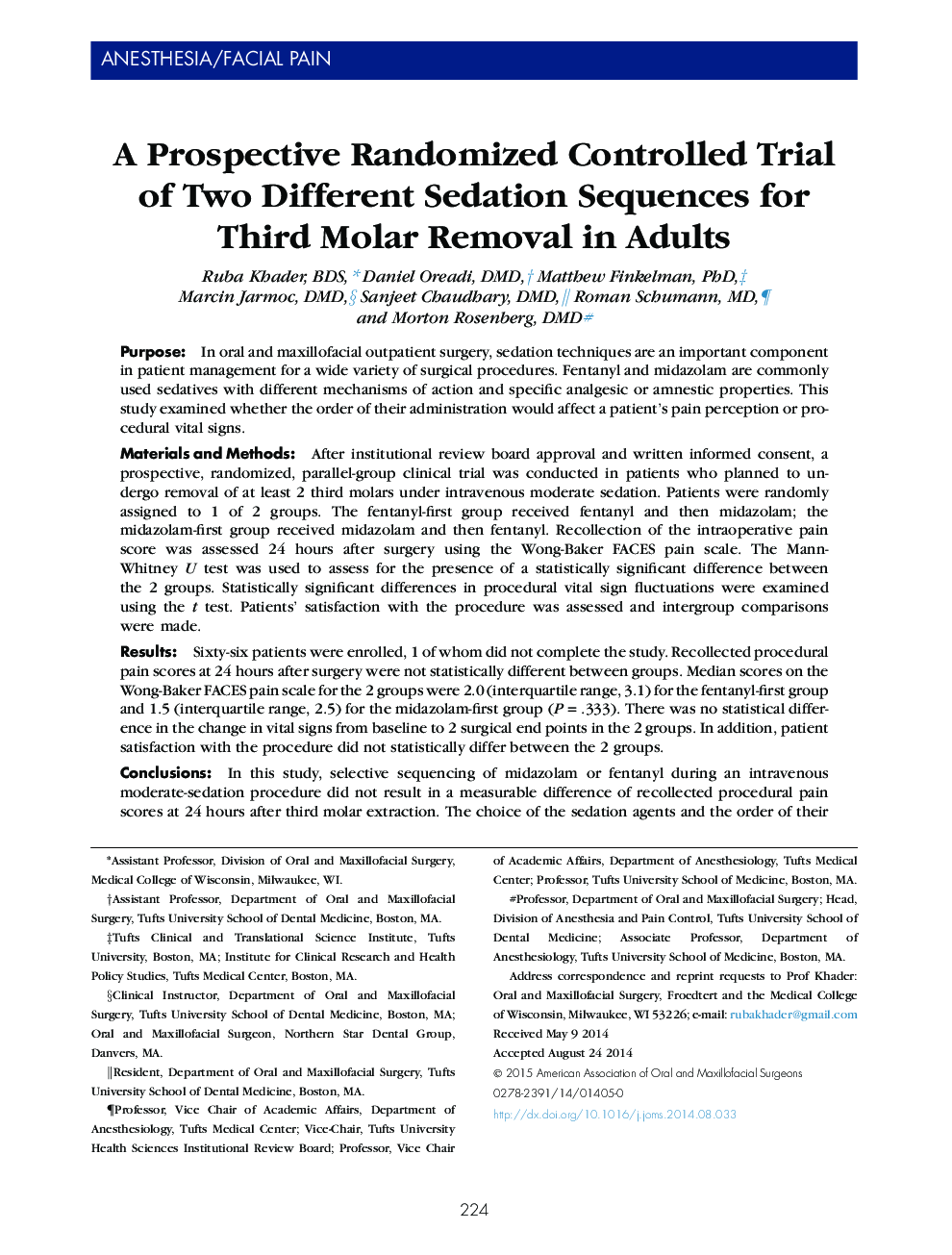| Article ID | Journal | Published Year | Pages | File Type |
|---|---|---|---|---|
| 3156034 | Journal of Oral and Maxillofacial Surgery | 2015 | 8 Pages |
PurposeIn oral and maxillofacial outpatient surgery, sedation techniques are an important component in patient management for a wide variety of surgical procedures. Fentanyl and midazolam are commonly used sedatives with different mechanisms of action and specific analgesic or amnestic properties. This study examined whether the order of their administration would affect a patient's pain perception or procedural vital signs.Materials and MethodsAfter institutional review board approval and written informed consent, a prospective, randomized, parallel-group clinical trial was conducted in patients who planned to undergo removal of at least 2 third molars under intravenous moderate sedation. Patients were randomly assigned to 1 of 2 groups. The fentanyl-first group received fentanyl and then midazolam; the midazolam-first group received midazolam and then fentanyl. Recollection of the intraoperative pain score was assessed 24 hours after surgery using the Wong-Baker FACES pain scale. The Mann-Whitney U test was used to assess for the presence of a statistically significant difference between the 2 groups. Statistically significant differences in procedural vital sign fluctuations were examined using the t test. Patients' satisfaction with the procedure was assessed and intergroup comparisons were made.ResultsSixty-six patients were enrolled, 1 of whom did not complete the study. Recollected procedural pain scores at 24 hours after surgery were not statistically different between groups. Median scores on the Wong-Baker FACES pain scale for the 2 groups were 2.0 (interquartile range, 3.1) for the fentanyl-first group and 1.5 (interquartile range, 2.5) for the midazolam-first group (P = .333). There was no statistical difference in the change in vital signs from baseline to 2 surgical end points in the 2 groups. In addition, patient satisfaction with the procedure did not statistically differ between the 2 groups.ConclusionsIn this study, selective sequencing of midazolam or fentanyl during an intravenous moderate-sedation procedure did not result in a measurable difference of recollected procedural pain scores at 24 hours after third molar extraction. The choice of the sedation agents and the order of their administration should be tailored to the patient's needs, type of surgical procedure, and surgeon preference.
